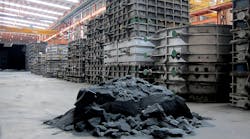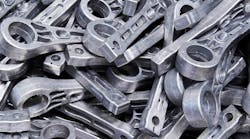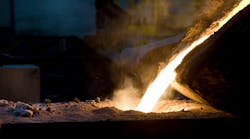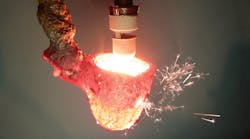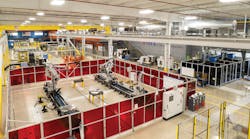Germany’s Halberg Guss GmbH will update and expand its compacted graphite iron production following recent orders for an upgrade to its SinterCast AB process control system, and a new order for a SinterCast System 3000 control system. The systems will be commissioned this summer at the foundry in Leipzig.
According to SinterCast, “the investment in increased CGI capability has been made to meet the potential near-term demand for more than 15,000 metric ton per year of CGI commercial vehicle components.”
Halberg Guss is a ferrous foundry group with plants at Brebach and Leipzig that designs and produces cylinder blocks and heads, crankshafts, and rear axle cases for automotive and commercial vehicle OEMs and engine manufacturers.
SinterCast is the largest supplier of process control technology for producing compacted graphite iron. CGI is a lightweight alternative to gray iron and aluminum for automotive component manufacturing. The package SinterCast developed (now in its third generation, System 3000) is under license to numerous automotive foundries worldwide and used to cast more than 50 different components in series production. A laboratory-scale version of the technology is used by several research centers around the world, too.
In its recent Q1 2013 report, the developer indicated that it has 20 fully automated SinterCast systems and 15 of the mini systems install in Asia, Europe, and North and South America.
The supplier has steadily increased the volume of its contribution to passenger car supply programs, including diesel engine cars, SUVs, and light-duty pick-ups. In its quarterly report, SinterCast indicated CGI production for a “high-volume petrol engine” program is on schedule for series production to begin this year.
On Track for 4.65 million
In all, the group forecast that current installations and projects under development have it on track to achieve commercial production volume of 232,500,000 metric tons/year (4.65 million “engine equivalents”) within five years.
The Halberg Leipzig foundry adopted the SinterCast in 2010, for producing commercial vehicle engine components. Currently it produces two CGI cylinder blocks in for heavy-duty engines, and the two new System 3000 packages will make it possible to increase its CGI capacity and productivity in expectation of higher production volumes.
"Building on our heritage as the first foundry in the world to support the series production of a compacted graphite iron cylinder block, beginning with the Audi 3.3 -liter V8 in 1999, and our CGI series production experience in both our Brebach and Leipzig foundries, we have made this strategic investment to support the needs of our customers and to position Halberg as one of the world's leading CGI providers," stated Halberg Guss managing director Matthias Schwabbauer.
According to SinterCast president and CEO Dr. Steve Dawson, "Halberg's commitment to increased CGI capacity provides another important indication of the growing demand for CGI, both in the passenger vehicle and the commercial vehicle markets."

